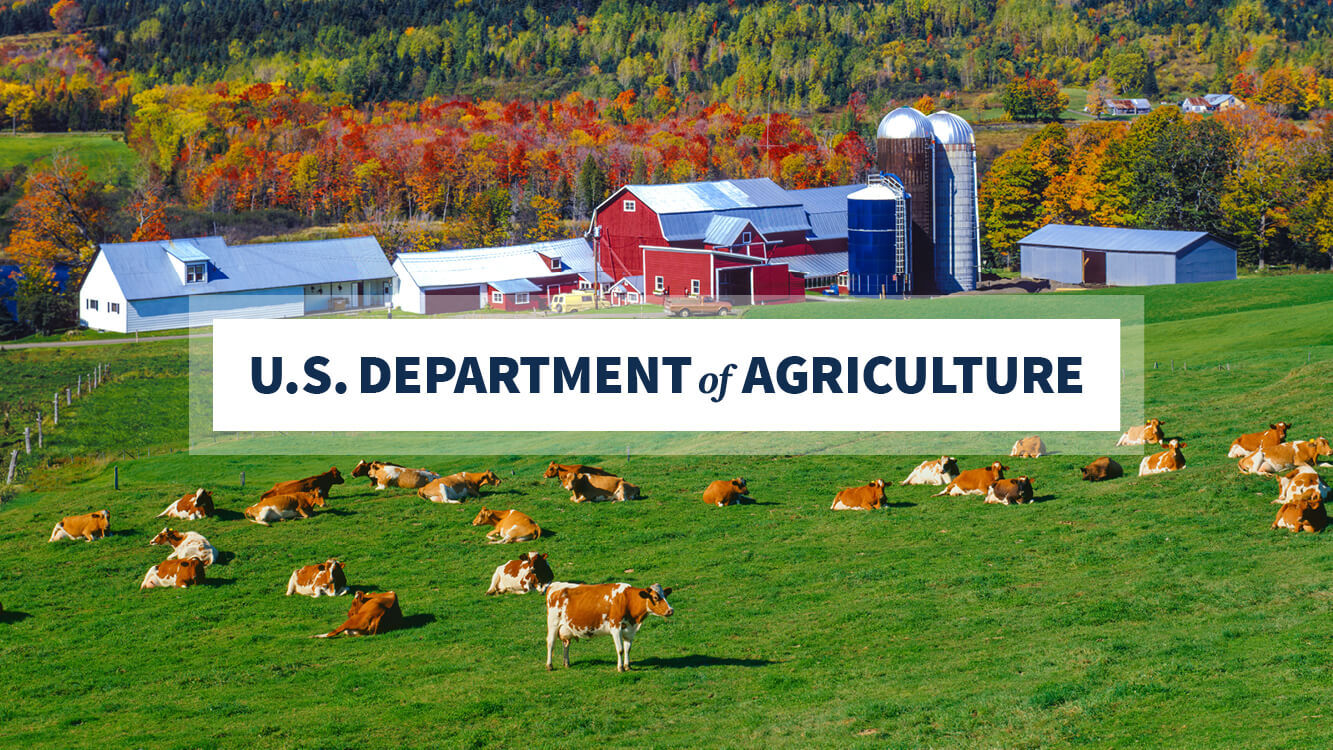
Biden-Harris Administration Makes Up to $7.7 Billion Available for Climate-Smart Farmland Practices Through Investing in America Program
October 3, 2024
USDA Provides Historic Investments in Cropland Through Inflation Reduction Act and Farm Bill
WASHINGTON, October 2, 2024 – The U.S. Department of Agriculture (USDA) today announced up to $7.7 billion in assistance in fiscal year 2025 to help agricultural and forestry producers adopt conservation practices on croplands. This includes up to $5.7 billion for climate-smart practices made possible by the Inflation Reduction Act, part of President Biden’s Investing in America program, and $2 billion in Farm Bill funding. This is more than double the amount available last year and the largest single-year conservation assistance available in U.S. history for USDA’s popular conservation programs.
With changing temperatures, precipitation patterns, drought, flooding, and increasingly severe extreme events such as hurricanes and wildfires, climate change is affecting the livelihoods of USDA stakeholders. Innovations to adapt to these changes will be critical to the future success of croplands. USDA’s Natural Resources Conservation Service (NRCS) has received more than 156,485 applications for its conservation programs in fiscal year 2024. While NRCS accepts applications year-round, interested agricultural producers can now apply for FY 2025 funding through NRCS at their local USDA Service Center.
“Thanks to the Biden-Harris Administration’s Inflation Reduction Act, American producers have additional funding for conservation programs and climate-smart practices. We continue to see record demand for these programs, and we are confident that we can continue to support conservation-minded producers,” said Agriculture Secretary Tom Vilsack. “This funding will be used to maximize climate benefits across the country while providing other important conservation and operating benefits, resulting in economic opportunities for producers, as well as more productive soil, cleaner water and air, healthier wildlife habitat, greater connectivity, and conservation of natural resources for future generations.”
L' Inflation Reduction ActThe largest climate and conservation investment in history, is investing an additional $19.5 billion in oversubscribed NRCS conservation programs over five years, beginning in fiscal year 2023. This year, through the Inflation Reduction Act, producers can apply for $2.8 billion through the Environmental Quality Incentives Program (EQIP), $943 million through the Conservation Stewardship Program (CSP), $472 million through the Agricultural Conservation Easement Program (ACEP) and up to $1.4 billion through the Regional Conservation Partnership Program (RCPP). This is in addition to the $2 billion available for these programs through the Farm Bill, including $860 million for EQIP, $600 million for CSP, $450 million for ACEP and $250 million for RCPP.
This assistance through the Inflation Reduction Act also helps to advance the President's Justice40 initiativewhich set a goal that 40% of the overall benefits of certain federal climate, clean energy, and other federal investments go to disadvantaged communities that are marginalized by underinvestment and overburdened by pollution. These investments also advance President Biden’s America the Beautiful initiative, a voluntary, locally-led conservation and restoration effort that aims to address the natural and climate crises, support cropland conservation, improve equitable access to outdoor recreation, and strengthen the economy.
Since its implementation began in 2023, this climate-smart conservation assistance has helped more than 28,500 farmers and ranchers apply conservation to 361 million acres of land over the past two years. These funds provide direct climate change mitigation benefits, advance a host of other co-benefits, and expand access to financial and technical assistance for producers to advance conservation on their farm, ranch, or forestland through practices such as cover cropping, conservation tillage, wetland restoration, prescribed grazing, nutrient management, tree planting, and more.
Climate-smart agricultural and forestry activities
The NRCS recently released an updated list of climate-smart agriculture and forestry mitigation activities eligible for Inflation Reduction Act funding in fiscal year 2025, which includes 14 new activities. NRCS also released the NRCS Conservation Practices and Greenhouse Gas Mitigation Information Dashboard sharing the expected mitigation benefits and science-based estimation approach for the listed practices.
These highly demanded activities should reduce greenhouse gas emissions or increase carbon sequestrationas well as provide other important natural resource benefits such as soil health, water quality, pollinator and wildlife habitat, and air quality. In response to feedback received from conservation partners, producers, and NRCS staff across the country, NRCS reviewed and evaluated the activities based on scientific literature demonstrating expected climate change mitigation benefits.
These activities will also help producers mitigate the risks of climate change, including drought and flooding from extreme weather events such as the recent hurricane. Agriculture is highly exposed to the physical risks of climate change. USDA estimates that due to increased drought fueled by climate change, the agency could see as much as double the number of livestock producers seeking assistance under the Livestock Forage Disaster Program by the end of the century compared to today. This equates to an increase of more than $800 million per year in federal spending by the end of the century.
Conservation easements
NRCS is accepting applications for FY 2025 ACEP, which includes $472 million in Inflation Reduction Act funds for this year. ACEP helps producers conserve and protect grasslands, wetlands and agricultural lands. Producers interested in Inflation Reduction Act funding through ACEP must submit their applications by the next two filing dates, October 4, 2024Or December 20, 2024Any ACEP application submitted to NRCS that was not funded in FY 2024 will automatically be reconsidered during the October 4 funding cycle.
In addition, NRCS is also accepting applications from ACEPs eligible for Farm Bill funding. Application dates for FY 2025 funding vary by state and are available at NRCS Filing Dates Webpage.
How to apply
NRCS accepts producer applications for EQIP and CSP year-round, but producers interested in FY 2025 funding must apply by their state's classification dates via the NRCS to their local USDA service centerThe funding is provided through a competitive process and is an opportunity to address unmet demand from producers who have previously sought funding for climate-smart conservation activities.
Additionally, USDA will host an information session on October 4 at 11:30 a.m. EDT for interested agriculture and conservation partners. USDA Under Secretary for Agricultural Production and Conservation Robert Bonnie, NRCS Chief Cosby, and several producers who have implemented NRCS programs with assistance from the Inflation Reduction Act will discuss voluntary conservation on working lands. Add to your calendar: Google, iCal Or Outlook.
More information
On August 16, 2022, President Biden signed into law the Inflation Reduction Act, the largest climate investment in history. This is a historic and unique investment and opportunity for the agricultural communities served by USDA. The Inflation Reduction Act will help keep producers on the farm, prevent producers from becoming ineligible for future assistance, and promote climate-smart agriculture by increasing access to conservation assistance.
For more than 90 years, NRCS has helped farmers, ranchers and forestland owners invest in their operations and local communities to improve the quality of our air, water, soil and wildlife habitat. NRCS uses the latest science and technology to help keep lands working, boost farm economies and increase the competitiveness of American agriculture. NRCS provides personalized one-on-one counseling and financial assistance and works with producers to help them achieve their goals through voluntary and incentive-based conservation programs. Now, with additional funding from the Inflation Reduction Act, NRCS is working to implement even more conservation practices on the ground while ensuring access to programs for all producers. For more information, visit www.nrcs.usda.gov.
USDA touches the lives of all Americans every day in so many positive ways. Under the Biden-Harris Administration, USDA is transforming America’s food system by increasing its focus on more resilient local and regional food production, fairer markets for all producers, ensuring access to safe, healthy, and nutritious food in every community, creating new markets and income streams for farmers and producers using climate-smart food and forestry practices, making historic investments in clean energy infrastructure and capacity in rural America, and committing to equity across the Department by removing systemic barriers and creating a workforce that is more representative of America. To learn more, visit www.usda.gov.
#
USDA is an equal opportunity provider, employer and lender.
